The end of the pandemic? More like the rebirth of the pandemic age
Vaccines mean we are hopefully coming to the end of COVID-19’s most-lethal phase. But really, we’re at the start.
This is “the rebirth of the pandemic age,” Professor Doherty says. “We need to treat COVID-19, painful though it is, as a trial run.”
***
Today, Turkey’s central plains are a patchwork quilt of broad-acre farming that feed a growing nation. But about 9000 years ago, parts of them were fertile wetland that played home to fish and waterbirds. Wild animals roamed the plains. There, a small band of stone-age humans established one of the first known cities: Catalhoyuk.
Cities, experts believe, are made possible by farming, which allowed us to produce more food and store it, allowing nomadic hunter-gatherers to settle down. And exploiting livestock, particularly sheep, goat and cattle, was central to Catalhoyuk’s existence. They were the centrepiece of the city’s feasts and banquets, their bones and horns becoming part of the mud-brick architecture, their painted images adorned the city’s walls.
Catalhoyuk’s early residents paid the price. Evidence from fossilised bones shows a third were affected by serious disease, many likely to have jumped from animals.
“When we lived in very small hunter-gatherer populations, there are so few hosts any virus would not have been able to spread that far. As we became farmers, we would have experienced more. In the first cities, we would have had even more,” says Professor Holmes.
***
Çatalhöyük’s honeycomb of mud-brick apartments laid the foundations for how we live now: in density. More than 50 per cent of humanity lives in cities; that number could rise to 70 per cent in the next 30 years.
Cities are naturally vulnerable to pandemics simply because they pack so many targets into a small space, according to a recent report from the UN-backed Intergovernmental Science-Policy Platform on Biodiversity and Ecosystem Services.
Dense city apartments were the site of superspreading events for the original SARS, while urban centres rapidly amplified West Africa’s Ebola outbreak, the report notes.
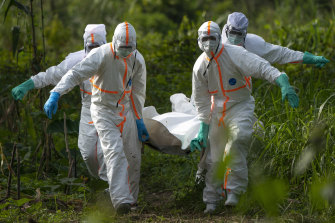
Burial workers in protective gear carry the remains of someone that died of Ebola in Beni, Congo in 2019.Credit:AP
It’s not clear where or when COVID-19 jumped from bats to humans, but it was in Wuhan the outbreak took off. Wuhan is a city of more than 11 million people – all susceptible targets. Mega-cities like this are “like fuel on the fire”, says Professor Holmes.
At the time the virus was spreading locally, Wuhan was celebrating Lunar New Year, a time that sees the city – a local and global travel hub – flooded with visitors from across China and the world. As they returned home, many they took the virus with them.
“It’s in Wuhan in the morning, and Singapore in the afternoon, and from there everywhere,” says Professor Holmes.
The Black Death took five years to circle Europe. An emerging virus in a city with an airport is instantly a global threat.
When the emergence of a possible new pandemic virus is detected, we need some sort of global agreement to instantly ground the world’s airplanes, says Professor Doherty.
“We stopped it from getting to Australia by stopping the planes,” he says. “We have to stop the planes. And we have to notify everyone so they have to stop the planes.”
***
Exploiting animals exposes us to their viruses, though the vast, vast majority cannot infect humans.
“But very occasionally they will. And if we keep exposing ourselves, it’s just a numbers game. Something’s going to happen,” says Professor Holmes.
Modern humans have been around for a few hundred years. Mammals have been around for hundreds of millions of years. That’s a long time for their viruses to diversify.
Examine newsletter
Science and health explained and analysed with a rigorous focus on the evidence. Examine is a weekly newsletter by science reporter Liam Mannix. Sign up to receive it every Tuesday.
Scientists estimate there are something like 1.67 million viruses circulating in mammals and waterfowl – although that’s a very rough guess. In complex life, there is maybe 87 million viruses. We have managed to catalogue perhaps 0.1 per cent of them.
How many virus species currently infect human cells? Two hundred and nineteen. More than 60 per cent of emerging infectious diseases in humans come from animals, with that number increasing over time.
To go from animal to human, a virus first needs to randomly develop a mutation that allows it to survive and replicate in two entirely different species. Then, it needs to be able to jump from human to human – all the while evading our immune system’s defences. Lastly, it needs the opportunity: the bat with the ultra-rare new disease needs to come into contact with a susceptible human, and that human then needs to spread the virus.
If we keep our contact with animal viruses low, maths is on our side. But given there are so many animal viruses, as we increase our contact with animals the maths starts to swing sharply the other way.
And new animal viruses are likely jumping over to humans way more than we think, experts suspect. It’s just that, in nearly every case, the virus cannot spread from patient zero. “Ninety per cent of the time, the farmer gets sick and does not give it to anyone else,” says Peter White, a professor of microbiology at the University of New South Wales.
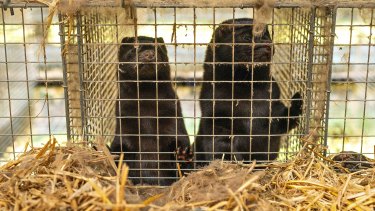
Minks in cages on a farm in Gjol, Denmark.Credit:Cathrine Ertmann/Bloomberg
***
Livestock is just one part of the problem. Pandemic threats lurk far from human eyes, in dark caves, wet rainforests, dense jungles. Places where biodiversity, and hence viral diversity are highest.
Every year, we intrude more and more into these spaces. Humans have already brought 70 per cent of the world’s habitable land under control. Our species’ population grew by 30 per cent in the last 20 years. We’re likely to have cleared 1 billion hectares of land by 2050 as a species, the Intergovernmental Science-Policy Platform on Biodiversity and Ecosystem Services report predicts.
It’s easy to blame local farmers for cutting down rainforest. But much of that virgin land will be planted with cash crops like palm oil to put in cosmetics sold to Western consumers, says Dr Michael Walsh, co-leader of the One Health Node at Sydney’s Marie Bashir Institute for Infectious Diseases and Biosecurity.
“Countries are losing their forests, their wildlife, for cash crops for export. And the people who are suffering, the ones who the diseases are spilling over into, they don’t have any control. They are not profiting off the forest loss,” says Dr Walsh.
With the forest gone, the animals that survive have nowhere to go but into human communities. Their viruses come with them.
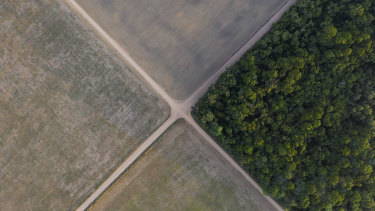
A section of Amazon rainforest stands next to soy fields in Belterra, Para state, Brazil. Credit:AP
Ebola and Lassa fever in Africa and Machupo virus in South America have all been linked to land-use changes, according to the IPBES report.
“We need to stop agricultural expansion at the rate it’s going,” says Dr Katie Woolaston, one of the report’s authors and a Queensland University of Technology international wildlife law researcher.
One way of doing that: a tax on meat consumption, as proposed by the IPBES report.
“That’s very controversial,” says Dr Woolaston. “But we need to really transform society. And if we’re going to do that, we need some radical changes, to make sure this does not happen again.
“This is the start of a pandemic era, because of human activity. This is a wake-up call.”
As the climate crisis boils over, it will push animals even further from their normal ranges and into ours. Warmer temperatures also open up communities to new threats.
Bluetongue disease – an African virus that can kill sheep – has spread to Europe over the last two decades, as the ticks that carry the virus move into the warming continent. Warmer temperatures are allowing a tick that spreads Lyme disease access to northern parts of America that were once too cold.
***
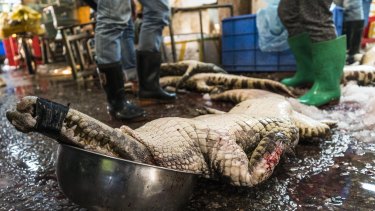
A dead crocodile is seen on the floor of Huangsha Seafood Market in Guangzhou.Credit:AP
The growing wildlife trade, which brings humans into close contact with exotic animals, poses serious epidemic and pandemic risks, with Ebola, SARS and HIV likely among the diseases that have resulted. Over the last two decades the trade has expanded significantly. The legal trade has grown by 500 per cent since 2005, per the IPBES report, and that’s not counting the often-invisible illegal trade. About a quarter of all land-dwelling species are now traded. Many of these animals end up at wet markets, such as the Wuhan market from which the virus is believed to have spread.
There is evidence wet markets do pose risks, as viruses are able to jump from one animal to another and then to humans. But blaming wet markets alone – which include Sydney’s Fish Market – is simplistic, says Dr Woolaston.
“A lot of people talk about it as a global south, a Chinese problem, but the driver of their trade is consumption. And that consumption comes from the global north,” says Dr Woolaston.
“The USA is among the biggest importers of wildlife, closely followed by Germany.”
Traditional Chinese Medicine’s demand for exotic animals is large, and China’s growing middle-class is inflating the market. But so is the demand from Americans keen to own an exotic pet. Netflix’s Tiger King doco shocked American viewers who were unaware the country has more pet tigers than there exist tigers in the wild.
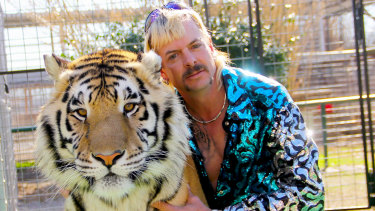
America has more pet tigers than there exist tigers in the wild.Credit:Netflix
***
Mike Pritchett flew into Australia early in the pandemic, after spending three years living between Australia and Singapore working on the video production start-up he founded, Shootsta.
The contrast, as he touched down in Sydney and then walked through the city, could not have been more jarring. Both countries have led the world in the effectiveness of pandemic response – but one, already scarred by the SARS shock, was far better prepared than the other.
“Lockdown was lockdown. You were allowed out once a day. If you were seen without your mask on, just going for a walk, people would take a photo of you on the street and you’d be busted. And you just would not break the rules – no one does that over here,” says Pritchett.
“Asia was ready. They already have biometric security. They take your temperature when you walk through the airport. Australia was left sitting there going ‘what’s happening?’.
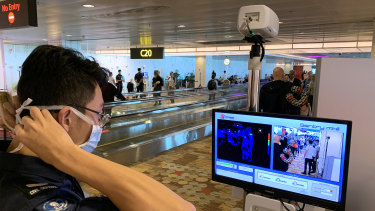
A body temperature scan at Singapore Airport.Credit:Getty Images
In our new pandemic age, every society that wants to weather the storm is going to need to become pandemic resilient – learning the same lessons Singapore and Taiwan learnt after SARS, says Associate Professor Adam Kamradt-Scott, an expert on pandemic preparedness at the University of Sydney.
SARS led the city-state to build its own pandemic hospital and create huge stockpiles of masks and gloves. Other hospitals ran regular pandemic simulations. Australia ran its last pandemic simulation in 2008 – and then stopped running them, despite universal recommendations to continue.
Instead, Australians spent years watching adverts for cold and flu medicine encouraging us to “soldier on” and head into work while infectious. We grew to tolerate a few thousand deaths from flu every year – which we cut down to just 37 last year thanks to our social distancing and hand-washing. A third of men still don’t wash their hands after using the toilet.
“We have seen an erosion of basic infection control practices, that has been occurring in Western societies for the better part of the 20th century, largely because of medical advances – when people got sick, they would go get antibiotics,” says Professor Kamradt-Scott.
In this new pandemic age, we need to do better.
Australia’s well-funded universal healthcare system, along with good disease surveillance systems, gives us a great foundation to work with. But we can do more.
Professor Peter Doherty would like to see us start some form of global initiative to develop broad antivirals for different classes of virus, so we have an arsenal ready to go when the next pandemic emerges – along with his global system for shutting down air travel.
University of Sydney pandemic expert Professor Kamradt-Scott hopes we will make infection control part and parcel of social life, in much the way the countries of south-east Asia embraced mask-wearing long before COVID-19. We could reverse the trend started by Catalhoyuk and start building cities in ways that lower our pandemic risk, rather than raise them. One obvious option: start building with antimicrobial materials, like copper. We could install automated decontamination systems in public spaces. We could improve ventilation.
“The question,” says Professor Kamradt-Scott, “is the appetite and the willingness to look into this. And the extent to which people want to get back to what they remember was life before.”
Start your day informed
Our Morning Edition newsletter is a curated guide to the most important and interesting stories, analysis and insights. Sign up to The Sydney Morning Herald’s newsletter here, The Age’s here, Brisbane Times’ here, and WAtoday’s here.
Liam is The Age and The Sydney Morning Herald’s science reporter
Most Viewed in National
Loading

